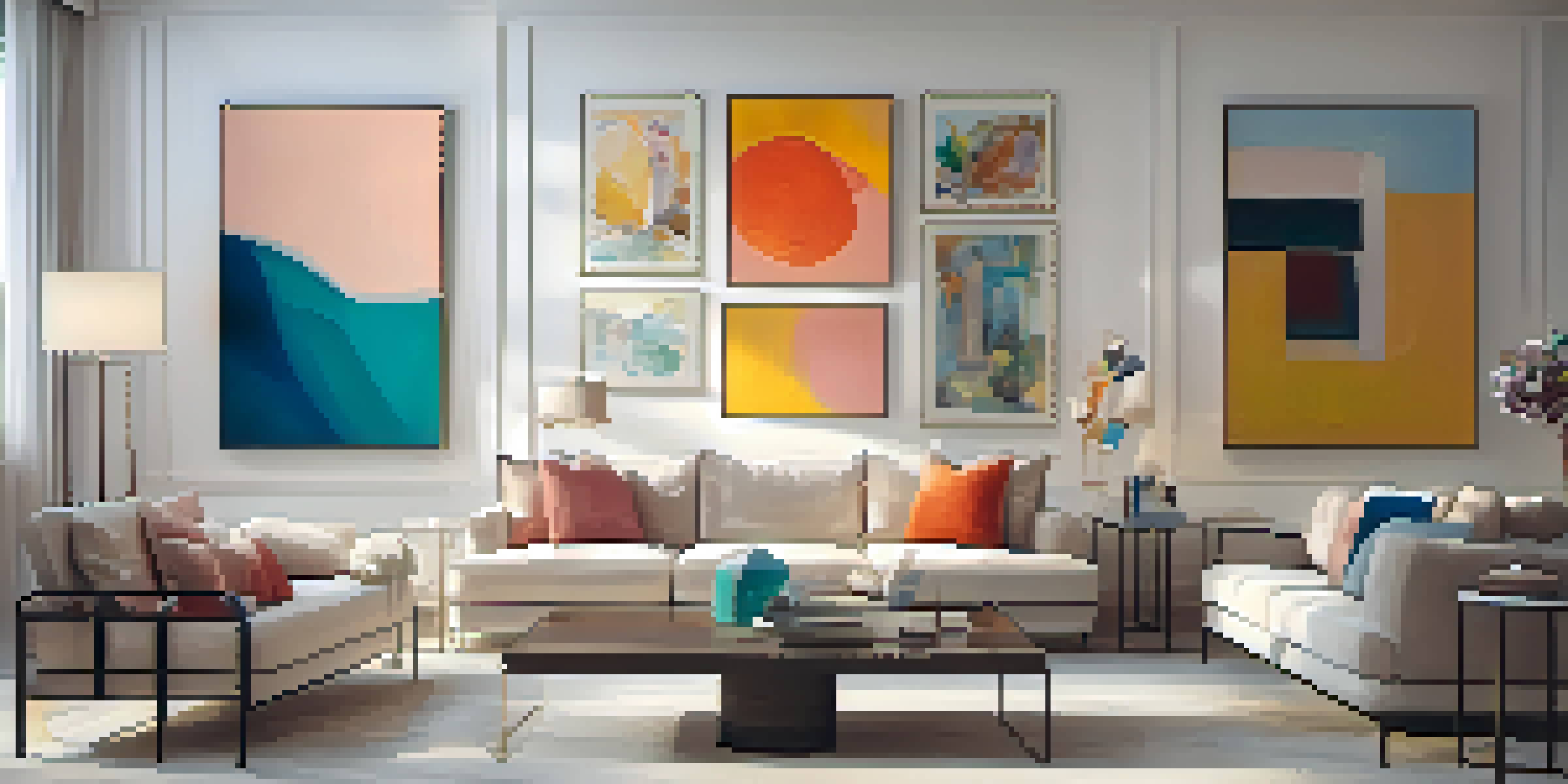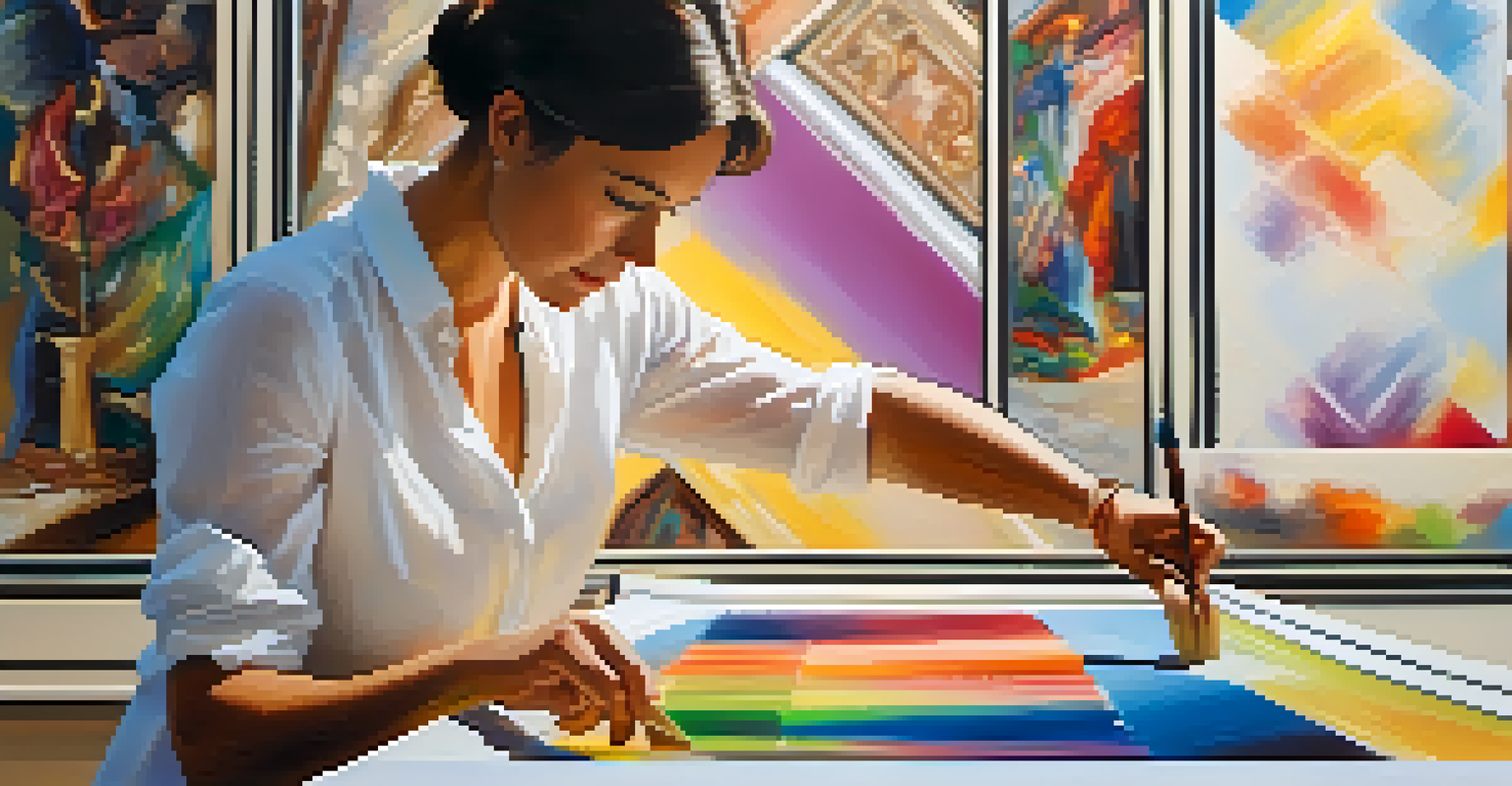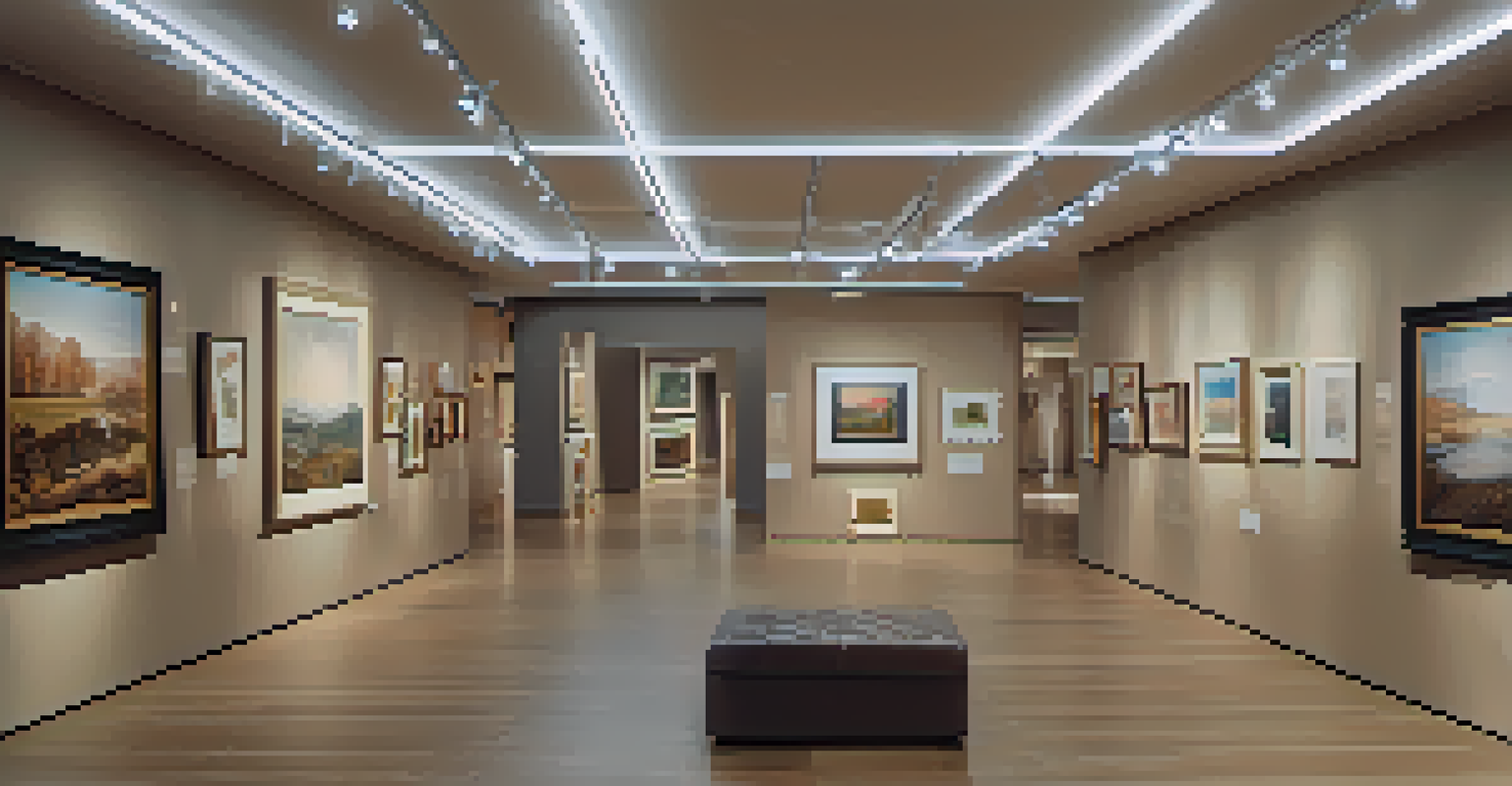Art Curation: How to Display Your Collection Professionally

Understanding Art Curation: What It Means for You
Art curation involves selecting, organizing, and displaying artwork in a way that enhances its appeal and context. It's not just about putting pieces on a wall; it’s about storytelling and creating an emotional connection between the viewer and the art. As a collector, understanding curation can significantly elevate the impact of your collection.
Art is the most beautiful of all lies.
A well-curated collection reflects your personal taste and vision, inviting viewers to engage with the pieces in a meaningful way. Think of it like hosting a dinner party: you wouldn't just throw random dishes together; you'd consider the theme, presentation, and flow. Similarly, curating art requires thoughtfulness and intention.
Moreover, effective curation can increase the value of your artwork by presenting it in the best possible light. It’s about creating an experience, not just a display, and this can resonate with potential buyers or visitors, making your collection memorable.
Choosing the Right Space for Your Art Collection
The space you choose for your art is just as important as the art itself. Whether it’s a dedicated gallery room, a living room, or an office, the environment should complement the pieces. Consider lighting, wall color, and furniture placement to create harmony with your collection.

Natural light can beautifully enhance colors and textures in art, but too much can also cause damage. Think of how lighting in a restaurant sets the mood—too bright can feel harsh, while dim lighting may not showcase the food. Similarly, the right lighting can make your art shine.
Art Curation Enhances Emotional Impact
Curation involves thoughtfully selecting and displaying artwork to create a narrative that resonates with viewers.
Additionally, your space should reflect your personality and the story you want to tell through your collection. A well-thought-out environment encourages viewers to stop and appreciate the art, making them feel invited into your world of creativity.
Selecting Artworks: Curating with Purpose
When adding to your collection, think about the narrative you want to create. Each piece should serve a purpose, whether it’s to evoke emotion, provoke thought, or simply bring joy. It’s like curating a playlist: every song should contribute to the overall vibe.
The greatest art is the art of living.
Consider the diversity of your collection as well. A mix of styles, mediums, and periods can create a dynamic space, much like a well-balanced meal that includes various flavors and textures. This variety can captivate visitors and keep them engaged.
Remember, the goal is to create a cohesive collection that tells a story. Each piece should relate to the others in some way, whether through theme, color, or emotion, forming a unique dialogue among the artworks.
Displaying Your Art: Tips for Professional Arrangement
The way you arrange your art can dramatically affect how it’s perceived. Consider the balance and symmetry of the display; just as a well-plated dish is more appetizing, a thoughtfully arranged collection is more inviting. Grouping smaller pieces together can create a focal point, while larger works may stand out better on their own.
Height matters too. Generally, art should be hung at eye level, but this can vary depending on the piece and location. Think of it like reading a book: if it's too high or too low, it can be uncomfortable. Adjusting the height ensures your audience can engage with the art comfortably.
Space and Lighting Matter for Art
The environment, including space and lighting, plays a crucial role in showcasing art and enhancing viewers' experiences.
Don’t forget about the negative space—the area around your art. Just like in graphic design, the right amount of space can help the pieces breathe and add to the overall aesthetics of the display. Too much clutter can overwhelm, while a clean arrangement allows your collection to shine.
The Importance of Lighting in Art Curation
Lighting plays a crucial role in how art is perceived. Natural light adds warmth and depth, but direct sunlight can fade and damage artwork over time. Consider using spotlights or adjustable fixtures to highlight specific pieces, much like how a spotlight highlights a performer on stage.
Different types of lighting can create various moods and atmospheres. For instance, warm lighting can evoke a cozy feeling, while cooler tones may lend a modern touch. Think about how lighting affects your mood in a café or a movie theater; the right lighting sets the scene for your art.
In addition to ambient lighting, consider using accent lighting to draw attention to certain pieces. This technique can create visual interest and guide viewers through your collection, making the experience more engaging and memorable.
Maintaining Your Collection: Care and Preservation Tips
Proper maintenance is key to preserving the integrity of your art collection. Regular dusting and cleaning can prevent dirt buildup, which can cause damage over time. Just like you wouldn’t neglect your favorite book, caring for your art ensures it remains beautiful for years to come.
Climate control is also essential. Humidity and temperature fluctuations can warp or damage artworks, so consider investing in a dehumidifier or air conditioning. Imagine the way a delicate flower wilts in extreme conditions; your art deserves the same level of care.
Engagement Creates Memorable Experiences
Inviting interaction and providing comfort for visitors can transform an art display into a rich and memorable experience.
Lastly, consider professional conservation services for valuable pieces. Just as you’d seek a mechanic for car trouble, a conservationist can help restore and preserve artworks, ensuring they stay in pristine condition for future generations to appreciate.
Engaging Visitors: Creating an Inviting Experience
An engaging art display invites viewers to interact with the pieces, sparking curiosity and conversation. Encourage guests to explore the stories behind each artwork through informative labels or guided tours. Think of it as hosting a gathering where you share anecdotes about each dish served; it makes the experience richer.
Consider incorporating multimedia elements such as audio guides or digital displays that provide deeper insights. This added layer can enhance understanding and appreciation, much like a film trailer builds excitement for a movie. The more engaged your visitors are, the more memorable their experience will be.

Finally, don’t underestimate the power of comfort. Providing seating areas or refreshments can encourage guests to linger longer, allowing them to soak in the artwork at a relaxed pace. Creating a welcoming atmosphere can transform a simple viewing into a cherished memory.